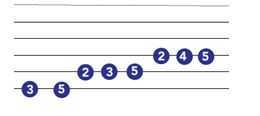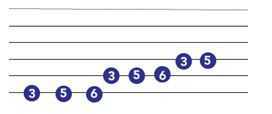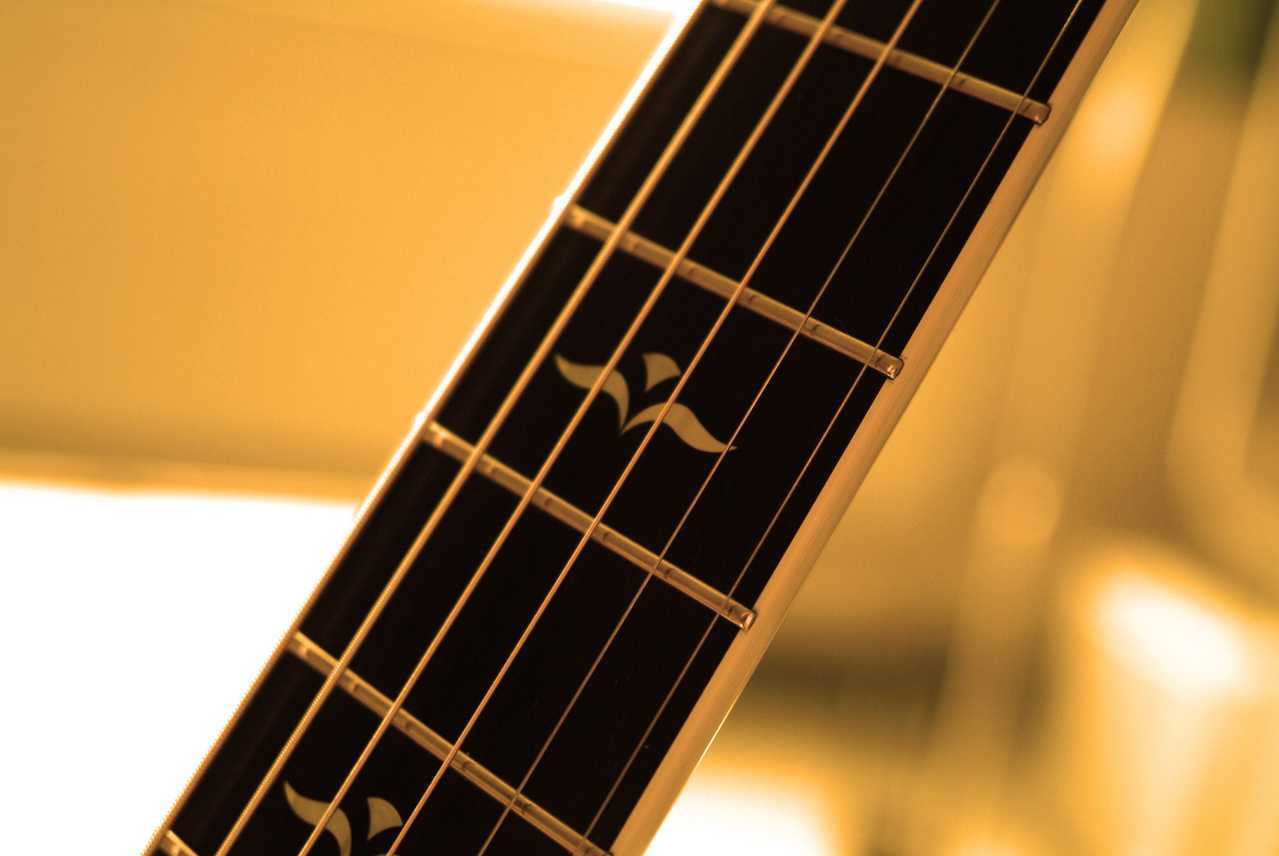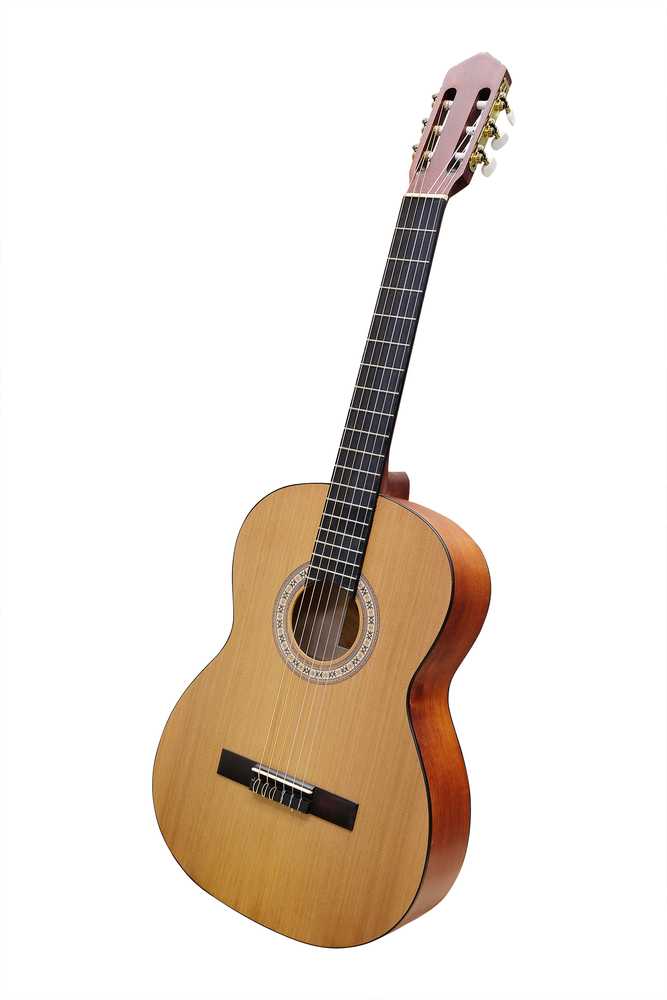Learning how to play scales is probably not what most beginning guitar students think about when they dream about playing the guitar. Many musicians and non-musicians alike see scales as boring exercises that are good at wasting time and not much else, but this couldn’t be further from the truth. Without proper music instruction, massively important material like scales, chords, and arpeggios are often never fully explained, and this is probably why scales get such a bad rap. In this article, we’re going to show you not only how to follow a simple guitar scales chart, but we’re also going to tell you what scales are and why they’re so important.
Why Scales Are Important
Scales are important for many reasons, but chief among them is that they can help us understand music theory. For example, playing a simple one-octave G Major scale provides a window into not only every note in the key of G, but every chord within the key as well. Chords, keys, and scales are all built off of simple music theory formulas, and understanding how they work can help increase our knowledge of music and prowess on our instrument. If you’ve worked with a guitar teacher who never explained the connection between scales and music theory, then you shouldn’t be faulted if you viewed scales as nothing more than guitar exercises.

It’s also important to know and regularly play scales because they can act as powerful exercises that have been proven to improve rhythm, dexterity, muscle memory, and finger strength in a musician. When a student regularly plays scales to the slow, steady click of a metronome, every aspect of their musicianship improves. For example, if you’re a guitar player who struggles with rhythm, memorizing a few simple scales and playing them to a metronome should help you tremendously. Scales are prime occasions to work on things like alternate picking and mastery of playing 8th and 16th notes and triplets.
Mastery of scales has the power to transform musicians into confident writers and improvisers with the ability to perform in any key in a variety of styles. There’s no better way to learn how to write a riff or improvise over a blues chord progression than to memorize pentatonic and blues scales. Scales help students become well-rounded musicians with access to powerful tools and ideas that their scale-less counterparts don’t possess. There’ve been many incredible musicians out there with no formal training as far as memorizing scales go, but the argument to purposely not learn how to play scales doesn’t really hold up when you consider just how much they can do for your musicianship.
Copy And Paste
Unlike instruments like piano, clarinet, or saxophone, guitar players have the advantage of being able to use the same fingers and shapes to play various scales and modes all over the guitar. Think of it this way: When guitar scales don’t use open strings, the sequence of fingers and distances between frets can be copied and pasted at any location on the guitar. This means that memorizing a few simple scales translates to knowing how to build scales anywhere on the guitar. That’s powerful stuff.

To know how and where to play scales on the guitar, you’ll need to at least be familiar with the note names on the 6th string. This shouldn’t be difficult. Starting with the note on the open E string, the note names move up fret by fret. Remember, flats and sharps share the same fret location. For example, the 4th fret is the location of both the Ab and G# notes. If you learn to follow a simple guitar scales chart for a G major scale on the third fret for example, the same fingers and intervals between notes can be applied up a fret to the key of G#/Ab or any other location so long as open strings aren’t used. If you’ve ever used a capo, that has a similar effect.
Now that we’ve covered why scales are so important for guitarists, let’s break a few scales down and teach you how to play them.
Pentatonic Scales
Pentatonic scales are usually one of the first things a guitar student learns for some good reasons. These scales are not only easy to play, but are also incredibly versatile and prominent within popular music. Everything from blues to Eastern music traditions features major and minor pentatonic scales, and the pentatonic harmonic influence on new influential styles of music is more distinct now than ever before. Pentatonic scales are built off of five notes and can be major or minor. These scales are especially important for guitarists wanting to learn how to play and write in rock genres. The following is a guitar scales chart for both the major and minor pentatonic scales.
Major Pentatonic:

Minor Pentatonic:

Blues Scales
Blues scales are built off the same notes found in the pentatonic scale with one added note. For major blues scales, a flattened note found on the third scale degree is added, and in minor blues scales a raised fourth scale degree is added.
Major Blues:

Minor Blues:

Mastering a simple blues guitar scales chart will help you learn how to speak the musical language of this profoundly influential style of music.
Major Scales
Major scales, which are also known as Ionian modes, are scales that sound full, bright, and complete. It’s important to memorize at least one simple major scale shape on the guitar to be able to improvise and write within major tonalities. We’re going to show you a guitar scales chart for the most basic version of a major scale here, but feel free to branch out to more extensive versions when you’re ready.
Major:

Minor Scales
There are three different types of minor scales: natural, harmonic, and melodic. To keep things simple, we’ll show you how to play the natural minor scale today. Minor scales and tonalities sound somber, deep, and morose. All guitarists should get familiar with at least one simple minor scale shape.
Minor:

Modes
A musical mode is defined as any sort of scale with an added set of melodic characteristics. Like we mentioned before, the major scale is also known as the Ionian mode. Composers and songwriters select specific modes to use in their pieces of music because each mode has its own unique character and sound. We’re going to describe each mode as well as the formula of how to build it in terms of whole and half steps. On the guitar, one fret is equal to one half-step.
Ionian – This mode is typically called the major scale. The pattern is WWHWWWH.
Dorian – The Dorian mode features a mostly minor feel and is featured in Michael Jackson’s song “Billie Jean.” The pattern is WHWWWHW.
Phrygian – Also known as the Spanish Gypsy scale, the Phrygian mode also closely resembles a minor scale other than the second note. The pattern is HWWWHWW.
Lydian – This mode is identical to major keys other than the raised fourth scale degree. Composers use this mode to inject levity into their pieces. The pattern is WWWHWWH.
Mixolydian – This mode is almost always used in blues music, and it features the dissonant interval of a tritone. The pattern is WWHWWHW.
Aeolian – Also known as the natural minor scale, this mode is featured in countless pieces of modern music. The pattern is WHWWHWW.
Locrian – The Locrian mode features the most dissonance out of any of the modes. HWWHWWW.
To adapt any of these modes to a guitar scales chart, simply write out six lines and place numbers over each line to represent where the notes are played on the guitar’s fretboard.








In the mode section what is W, H.???
Whole step and Half step.
How do u use these half an whole scales in playing cant read music at all
If u start at c on piano so the first set of black keys there two there only 7 white keys and 5 black so goes order of the white keys in a row is cdefgab those are all whole steps and that is also the c major scale That respetas up the piano the entire way now go back to the c from start to understand the black keys naturally we will start at the lowest point of The piano so from the very first White key which is c the first black is a half step in tone or frequency or vibration whatever you choose to call it it’s just a word that is c # after that is the second white key and then second black key which againIs also a half step in tone higher so d #then comes third white key e now at this point the white key next to e will be f then the third black key f# or half tone higher than f then the next white the fith white of 7 will be g the next black g# again half tone higher than g then comes the sixth white key which is A and the fifth and final black A# sharp then the last white is B again two whites in a row so b to c that is all if u go backwards those are called flats or half tone lower than the note preceding it does that make sense please let me know if not